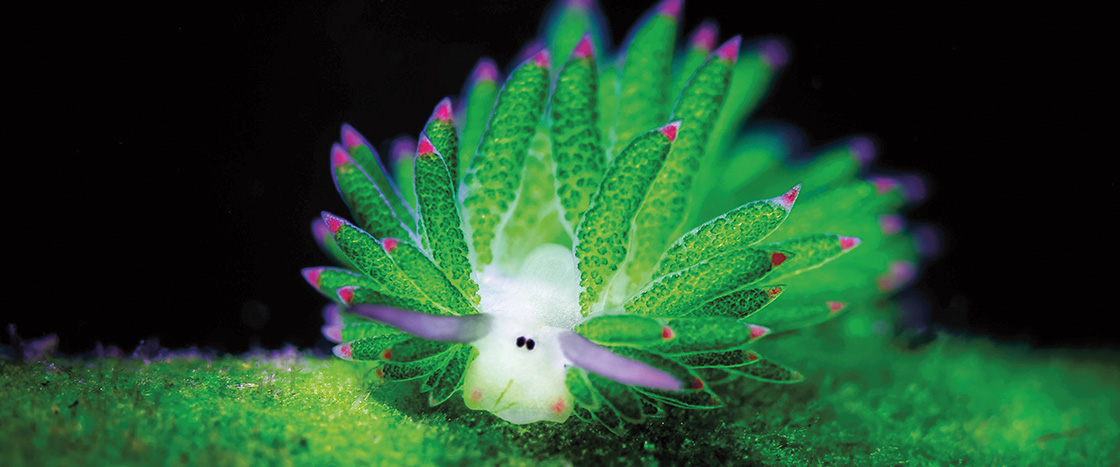A leaf sheep isn’t a leaf—or a sheep! It’s a type of sea slug. Sea slugs are invertebrates (animals without backbones) that live in the ocean. They are closely related to other soft-bodied animals, like snails and clams. There are about 3,000 known sea slug species around the world!

Meet the Leaf Sheep
This special sea animal is powered by the sun
Learning Objective: Students will ask questions and obtain information about the leaf sheep, a kind of sea slug.
Standards
Alex Mustard/NaturePL.com (Red Leaf Sheep)
Sea slug species can look wildly different.
Squishy Slug
Media Drum World/Alamy Stock Photo
The tips of the leaf sheep’s pointy antennae have tiny hairs that sense chemicals in the water. The hairs help the slug find algae, its favorite meal.
Shutterstock.com
Teeny Tiny: A leaf sheep is about the size of a grain of rice. This is the sea slug’s real size!
iStockPhoto/Getty Images (Structure); Shutterstock.com (All Other Images)
These structures in a leaf sheep’s cells turn the sun’s energy into food!
Solar Powered
The leaf sheep is one of the few animals that can perform photosynthesis (foh-toh-SIN-thuh-suhs). That’s the process plants use to collect energy from the sun and turn it into food. Leaf sheep can do this because they munch on plantlike organisms called algae. The sea slugs absorb the structures in algae cells that perform photosynthesis. These structures also turn the leaf sheep bright green!
iStockPhoto/Getty Images
Beloved Critters
Jim McMahon/Mapman®
Leaf sheep live in shallow waters and coral reefs near the islands of Southeast Asia and Oceania. Divers in these areas love to catch a glimpse of the colorful creatures. Some locals nicknamed the sea slug Shaun the Sheep, after a popular television character! Do Do they look similar to you?
1. PREPARE TO READ (10 minutes)
Use an article to make observations and ask questions about leaf sheep.
- Project the article in presentation view. Use the spotlight tool to focus on the main image of the leaf sheep.
- Review the graphic organizer I Notice, I Wonder. If needed, explain what an observation is (something you notice with your senses, like something you see).
- Share an observation and question about the image. Then have students record their own observations and questions on the graphic organizer. Encourage them to write as many as they can. When they’re finished, they can turn and talk with a partner about what they wrote.
2. READ AND ANALYZE (15 minutes)
Explore the article and describe key adaptations.
- Read the article aloud while students follow along in the magazine, or have student volunteers read each caption.
- ASK: What did you learn about leaf sheep and their adaptations? (e.g., They have tiny hairs that help them find food.)
- Encourage students to refer to the text as they complete the following sentences: “One adaptation that leaf sheep have is __________. This adaptation helps them survive because __________.” Have volunteers share their sentences.
3. RESPOND TO READING (20 minutes)
Use the article and other sources to answer students’ questions about leaf sheep.
